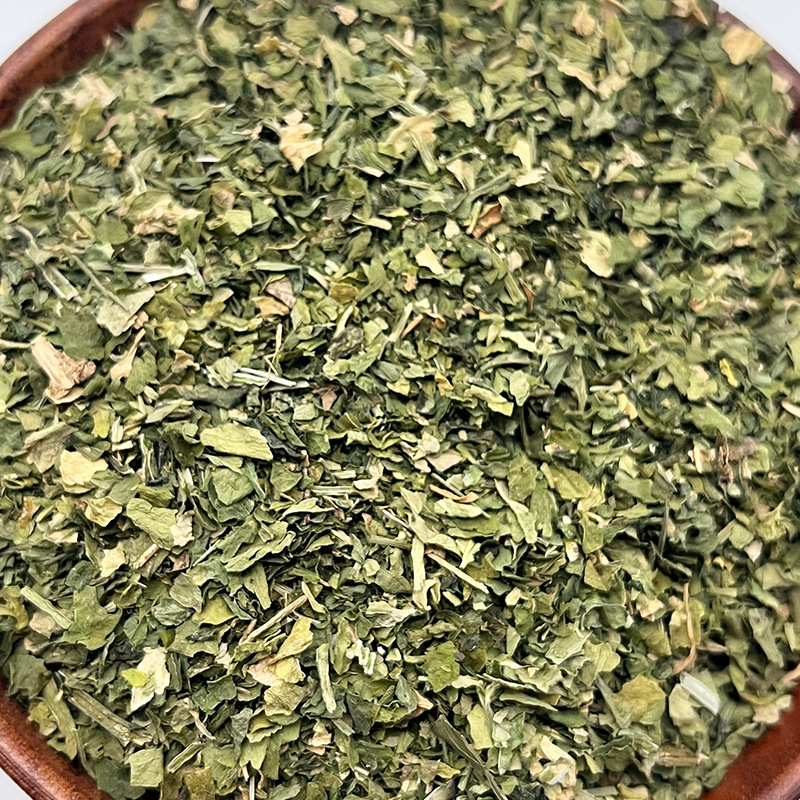Dried parsley is a common culinary herb that has been dried to preserve its flavor and can be used in a variety of dishes. Parsley (Petroselinum crispum) belongs to the Apiaceae family and is known for its fresh, mildly peppery, and slightly sweet flavor. Drying parsley helps extend its shelf life, making it a convenient option for times when fresh parsley is not available.

Here are some key points about dried parsley:
1.Flavor Profile: Dried parsley retains some of the characteristics of fresh parsley but is generally milder. It adds a subtle herbal note to dishes without being overpowering.
2.Culinary Uses: Dried parsley can be used in a wide range of savory dishes, including soups, stews, sauces, marinades, and salads. It's a versatile herb that complements many other flavors.
3.Substitution for Fresh Parsley: When using dried parsley as a substitute for fresh parsley in recipes, it's important to note that the dried form is more concentrated. As a general guideline, you can use about one-third to one-half the amount of dried parsley compared to fresh parsley.
4.Storage: Like other dried herbs, dried parsley should be stored in a cool, dark place, away from direct sunlight, to maintain its flavor. It is also recommended to store it in an airtight container.
5.Nutritional Content: While drying can cause some loss of nutrients, dried parsley still contains certain vitamins and minerals, such as vitamin K, vitamin C, and iron.
6.Adding to Dishes: Dried parsley can be added early in the cooking process to allow its flavors to infuse into the dish. Alternatively, it can be sprinkled on top of finished dishes for a decorative touch.
7.Blends: Dried parsley is often included in various spice blends, such as Italian seasoning or fines herbes, which are combinations of different herbs used to enhance the flavor of dishes.
While fresh parsley is prized for its vibrant color and stronger flavor, dried parsley is a convenient pantry staple that can add a touch of herbaceous goodness to your cooking.